Cusco, Peru is currently experiencing issues with contaminated water, insufficient monitoring of waste, and various health issues from environmental problems. The Municipality of Cusco contacted our team, partners at Universidad San Igancio de Loyola, and most recent student cohort in January to obtain information on the basic sanitation of water installations in prioritized rural communities. The goal is for the information discovered here to facilitate decisions regarding the health conditions of children and the general population, taking into consideration the presence of Parasitosis among 40% of the inhabitants and prevailing malnutrition and anemia.
The project location is focused in the region of Sacsayhuaman, a citadel on the northern outskirts of the city of Cusco, Peru, and a historic capital of the Inca Empire. This is home to four communities that are experiencing increased health concerns directly correlated to water quality and the health of children and adults: Fortaleza, Salkantay, Pucara, and Huayllarcocha.
Our students split up into four groups and had an opportunity to observe and analyze the water sources and devices being used in each community. In this report our students have included their initial observations, measurements, thoughts, and suggestions based on the daily lifestyle and needs of the community. This report below is to provide the Municipality of Cusco with information to facilitate their decisions and efforts to improve the water, health, and sanitation in these communities. We hope future GREEN Program cohorts can continue working on this project with repeated visits, building trust and relationships with the communities, and working together towards sustainable solutions for increased water sanitation.
For many of our students this was their first field visit. After the visit, we had a group debrief with our professors. Here is the video recording of our discussion:
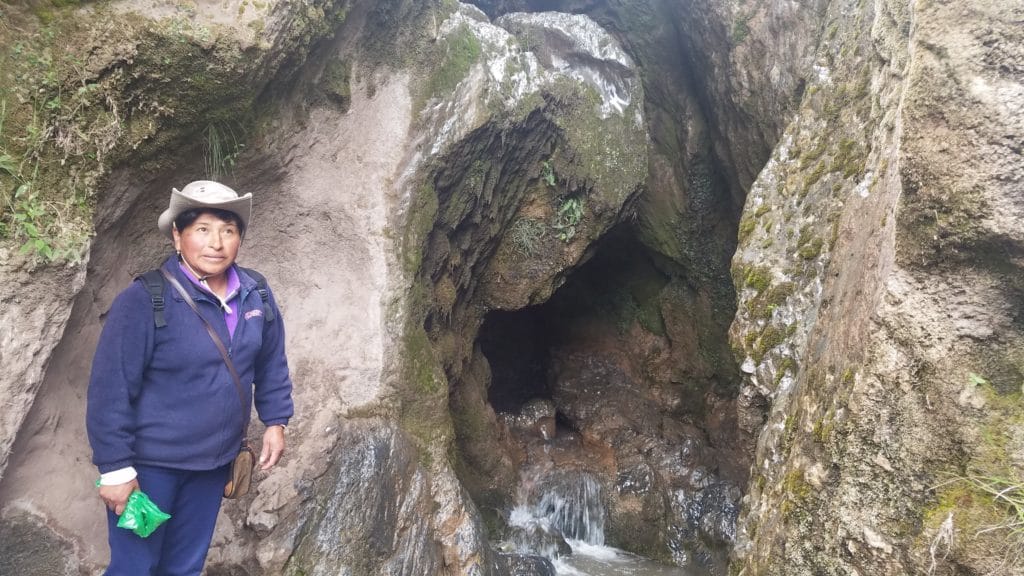
Project Scope
Here is the project scope from the Municipality of Cusco (translated from Spanish):
NAME OF THE PROJECT: “IMPROVEMENT OF THE CAPACITY OF PREVENTION OF MALNUTRITION OF CHILDREN BETWEEN 0-5 YEARS OF AGE IN THE RURAL AREAS OF THE CUSCO DISTRICT”.
OBJECTIVES OF THE ACTIVITY:
- Determine the situation of water tanks (reservoirs) in the Queresmayo river basin
- Identify the state of water collecting installations
- Check the state of water distribution installations
- Evaluate the functioning of water disinfecting systems in the rural communities
DESCRIPTION OF THE WORK:
The activity forms part of the public investment project, COMPONENT 1: WATER CONSUME AND SAFETY, Activity 1: Visit to the places of water collecting and distribution to create awareness among the local families about the safe water consumption and evaluate the situation of the water installations in 4 rural communities:
- Situation of water collecting installations
- Conditions of water reservoirs (age, state of preservation, dimensions, presence of metal tubes inside the reservoirs etc)
- State of the water distribution box (state of levers, tubes, bypass valves, air valves, purge valves)State of the tubes that conduct water to the communities
- State of the disinfecting systems used by the communities
TASKS (SEE POINT 2)
- Determine the situation of water tanks (reservoirs) in the Queresmayo river basin.
- Identify the state of water collecting installations
- Check the state of water distribution installations
- Evaluate the functioning of water disinfecting systems in the rural communities
EXPECTED RESULTS
Obtain information on the basic sanitation of water installations in the prioritized rural communities in order to facilitate decisions regarding health conditions of children under the age of 5 and the general population, taking into consideration the presence of Parasitosis among 40% of the inhabitants and prevailing malnutrition and anemia.
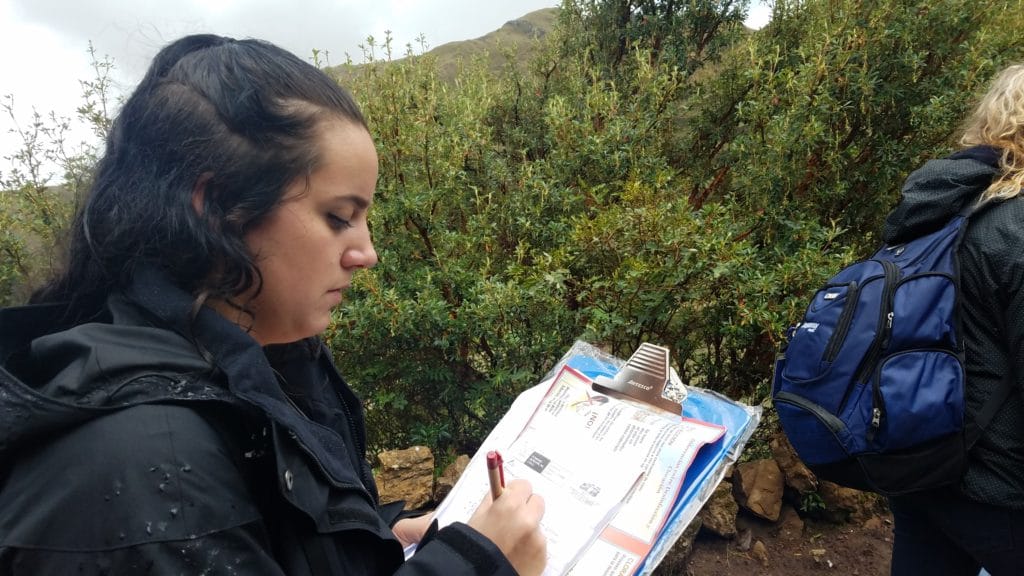
COMMUNITY: PUCARA
LOCATION: SHAPI BASIN
TOTAL POPULATION: Approx 200
MAIN ECONOMIC ACTIVITIES:
- Cultivation of potatoes, corn, beans, barley
- Breeding of Animals (ginuea pigs, hens)
HEALTH PROBLEMS:
- Malnutrition
- Parasites (of 8 samples analyzed 6 have the guardian parasites lambia, heminolepis nana or others)
- Anemia (8 samples analyzed, 3 have mild to moderate anemia)
- Unsafe water consumption
Our Findings
By Gabriela Moy, Nick Kweder, Ross Phillips, AJ Roskopf, Lamees Alkhamis, John Del Toro, Hillary Anderson, Sam Spicer, Ryan Brodziak, Moses Hsaio, Angelica Ordonez Celi
Overall Observations & Recommendations
- The tanks used metal gates that were rusted and not sealed properly
- These could be replaced with gates that have a rubber seal
- Also find a way to keep people out of the tanks
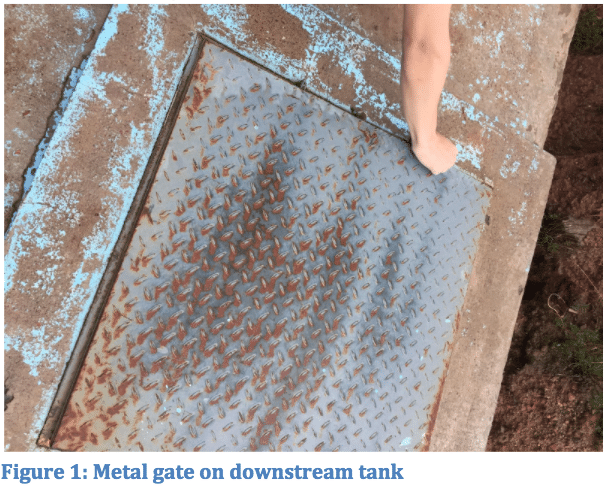
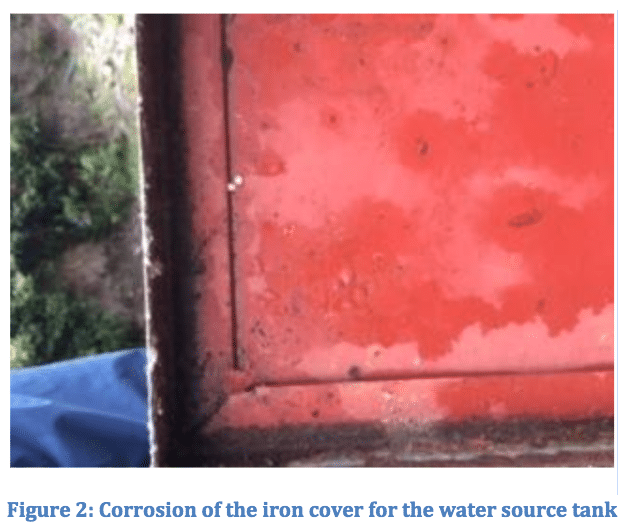
- Both tanks are stagnant
- Adding a turbine element at the inlet pipe would allow the water to move and become less contaminated
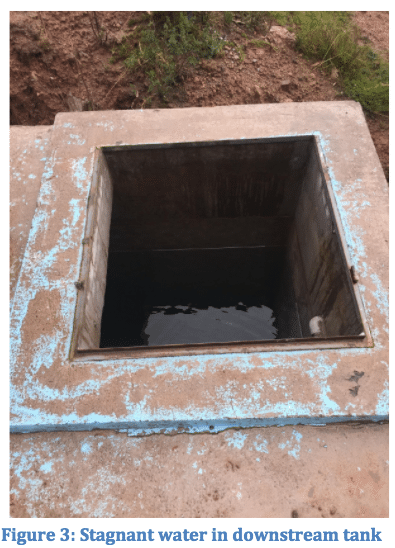
- 100% of people in this community have parasites
- Tests should be run throughout the whole system (from the source to where the families get water) in order to see where the bacteria is coming from and from there we can pin point the problem
- It’s important to see if the problem is the location of the bathrooms since the waste goes underground and could potentially cross the pipes that are providing water to each home
Source Observations & Recommendations
- Mold was growing in the corner of the tank
- A temporary solution would be to flush the tank and clean it with bleach or some other chemical
- People are going into the tank such as shepherds to give water to their animals
- Find a way to lock the source tank so that people cannot access this water through the gate
- There were insects in the water
- Run water quality tests checking for iron, TSS, TDS, BOD, hard metals, etc. in order to define the water quality in the tank
- Filter water at the outlet
- Not receiving enough water
- Find a method to catch the rainwater more efficiently
- Get another source, similar as they had before
Downstream Reserve Observations & Recommendations
- 10 families are not receiving clean water (this can be up to 70 people)
- Expand the distribution lines
- The families are boiling water with wood and so it does not get to a boil
- Educate on how to boil water- how much time is needed, if salt needs to be added to boil quicker, etc.
- Tank may be leaking
- Replace with PVC or similar material
- Agriculture tank was contaminated
- Overflowing water from reservoir could move to another place by extending it further so it doesn’t erode the agriculture tank
- Add a mesh to keep insects out of the inlet pipe
- Distribution tank needs to be sealed to public so it doesn’t contaminate
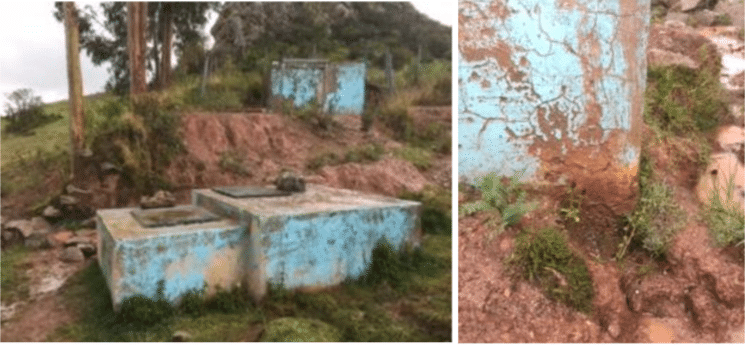
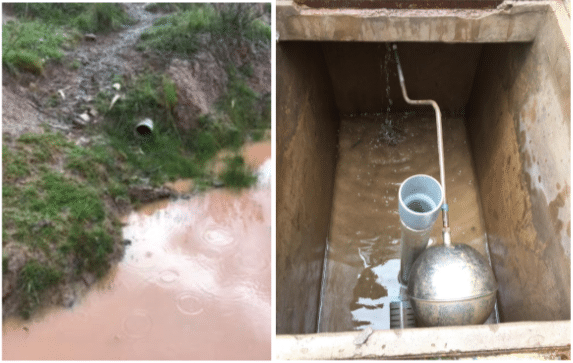
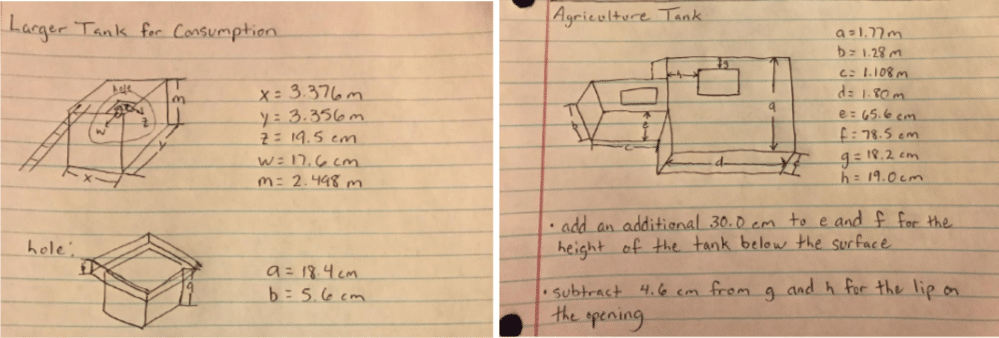
COMMUNITY: FORTELEZA / SALKANTAY
LOCATION: SHAPI BASIN
TOTAL POPULATION: Approx 1,450
MAIN ECONOMIC ACTIVITIES:
- Cultivation of potatoes, corn, beans, barley
- Breeding of animals (guinea pig, sheep, hens)
- Trade in handicrafts, textiles and other (almost 10% of the population)
HEALTH PROBLEMS:
- Malnutrition
- Parasites (of 42 samples analyzed, 21 have the guardian parasites lambia, heminolepis nana or others)
- Anemia (44 samples analyzed, 19 have mild to moderate anemia)
- Unsafe water consumption
Our Findings
By Berrill Behrens, Aspen Coty, Kelly Dodge, Melina Guida, Lindsey Peterson, and Tyler Collura
Overall observations and recommendations
At the start of our day we proceeded to Salkantay to observe the tanks that provide water to the houses in the area. The first tank we came across contained a broken entry-door at the top that is used to retrieve water. The broken door allows for runoff from animal feces and agriculture runoff, which contain many parasites and sources of e-coli. The tank also included an abundance of human trash that could have entered through the door not being able to close properly. In addition, the pipes and valve connected to the underground system that provides water to the houses were severely damaged and leaking. To prevent further damage, people in the community have resorted to electrical tape which has not stopped further leakage.
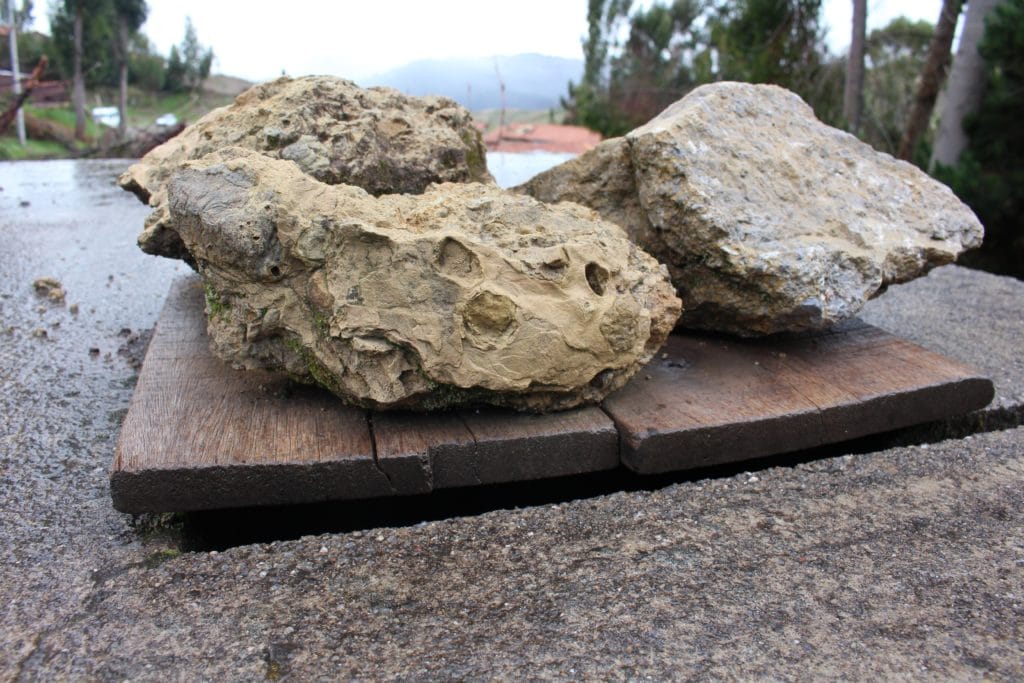
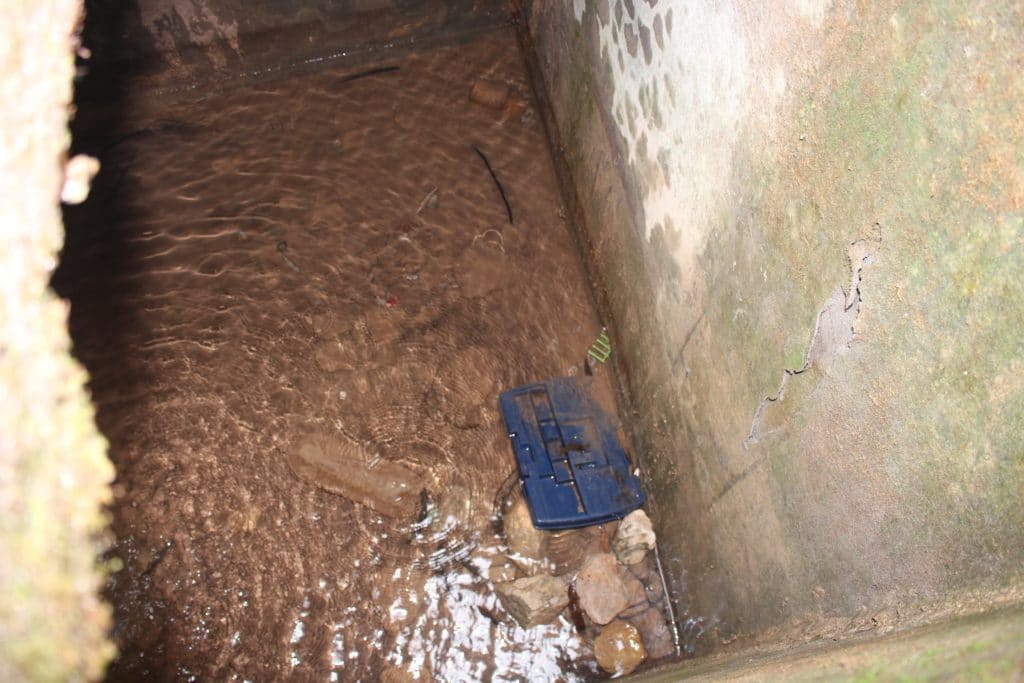
Shortly after we learned that this is the only tank providing water to this community. This is due to the fact that their other tank has been out of service for 20 years. Unfortunately this tank is too high to further allow water to flow to the community, so it is essential that their one tank is in top quality edition.
After seeing the issues Salkantay are facing, we went on to observe the tanks used to provide water to Fortaleza. This community utilizes a total of 4 tanks, with an additional tank further down the hill for storage. These tanks collect water from underground springs and are fed to the community through a single pipe system before being distributed throughout the area. These tanks are cleaned and scrubbed every 6 months by the community using chloride, and checked every 3 months by the local government to assess if it is safe for use. However, even after these cleanings and checks kids are still being tested as positive for anemia regardless of efforts through iron supplements. Our visual observations concluded that all 5 tanks have rusty latches and doors that are not water tight. Although these tanks are fenced in, the barb wire used is weak and there was still presence of animal feces and agriculture runoff contaminating the water. There is also a rock present in one of the storage tanks to control overflow of water during the rainy season.
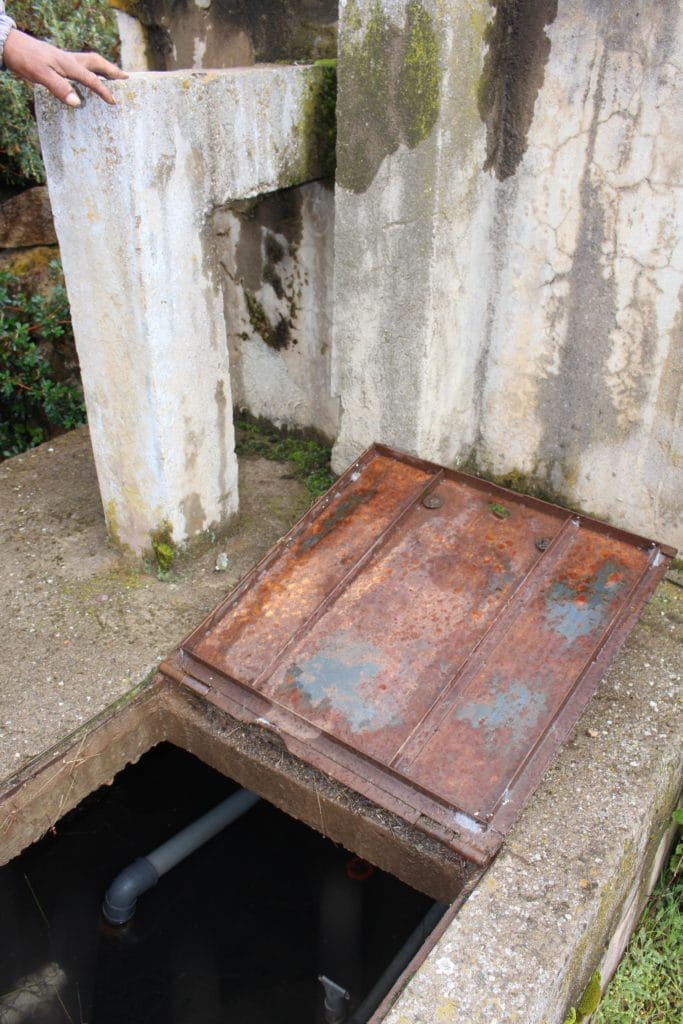
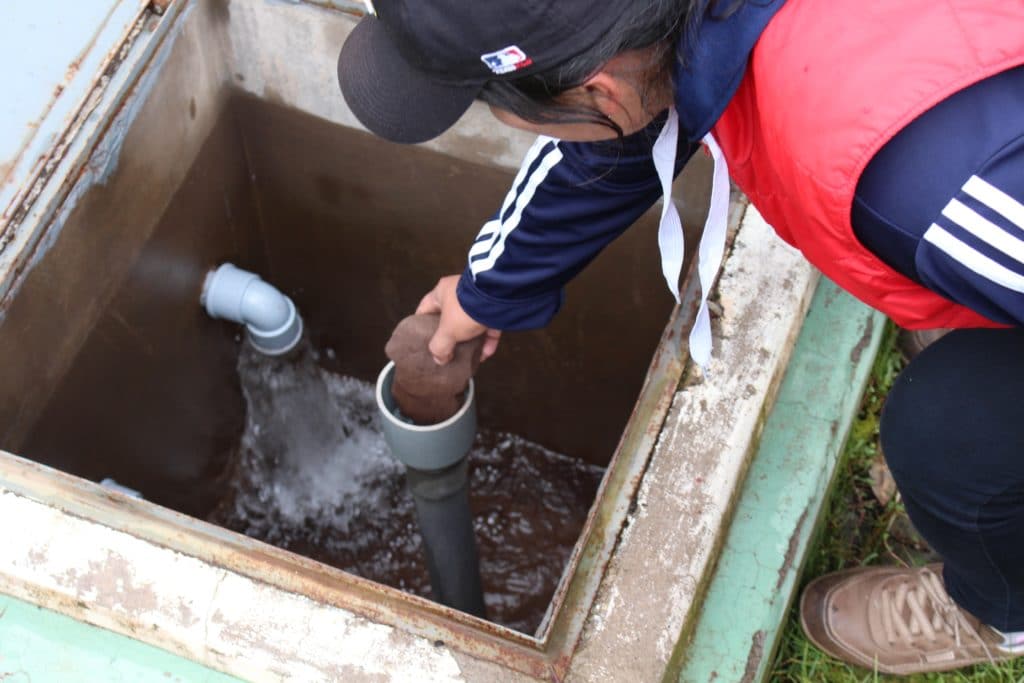
Based on our observations, we suggest that the first tank observed in Salkantay needs new pipes installed to constitute for the damaged pipes being repaired using only electrical tape. Also, due to the large amount of garbage found inside, it is evident that this tank needs a sealed air tight door installed to improve the runoff and ability for outside waste to enter. Behind the tank is a spicket which community members also use to collect water, and also acts as a drinking faucet for kids, this spicket is also being repaired with electrical tape and needs to be replaced. As for the storage tanks for Fortaleza, the size of them does not allow sufficient storage of water during the dry season and rainy season. We suggest installing larger tanks so that they can allow the tanks to fill up more, rather than turning the water system on and off. If the tanks cannot be installed, we suggest reusable barrels for storage during the dry season, where members can fill it a few months prior and keep it nearby if needed.
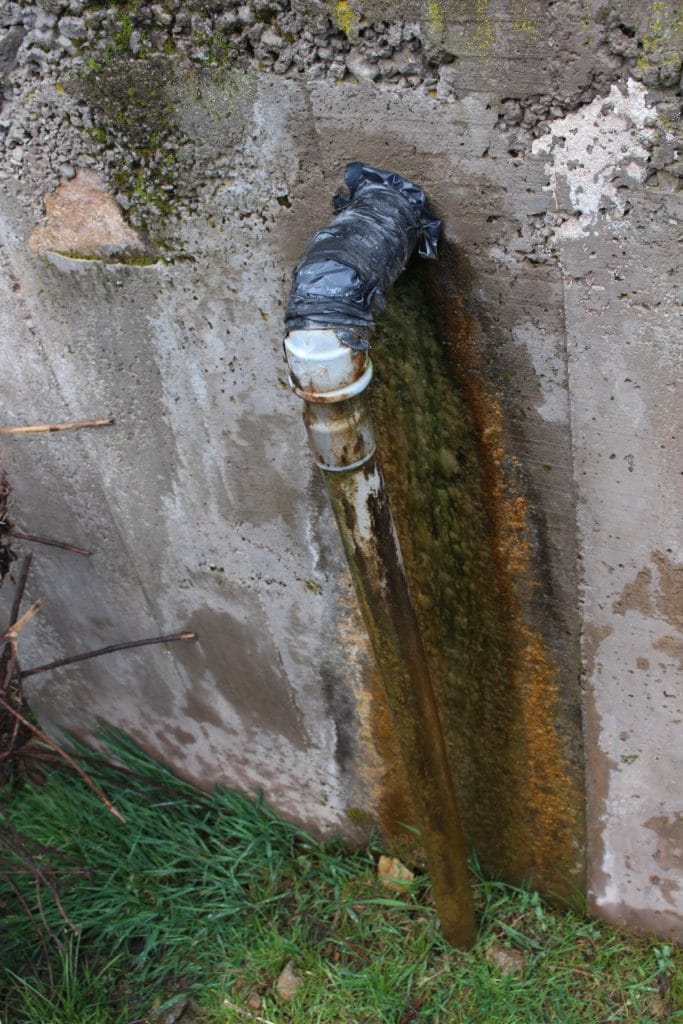
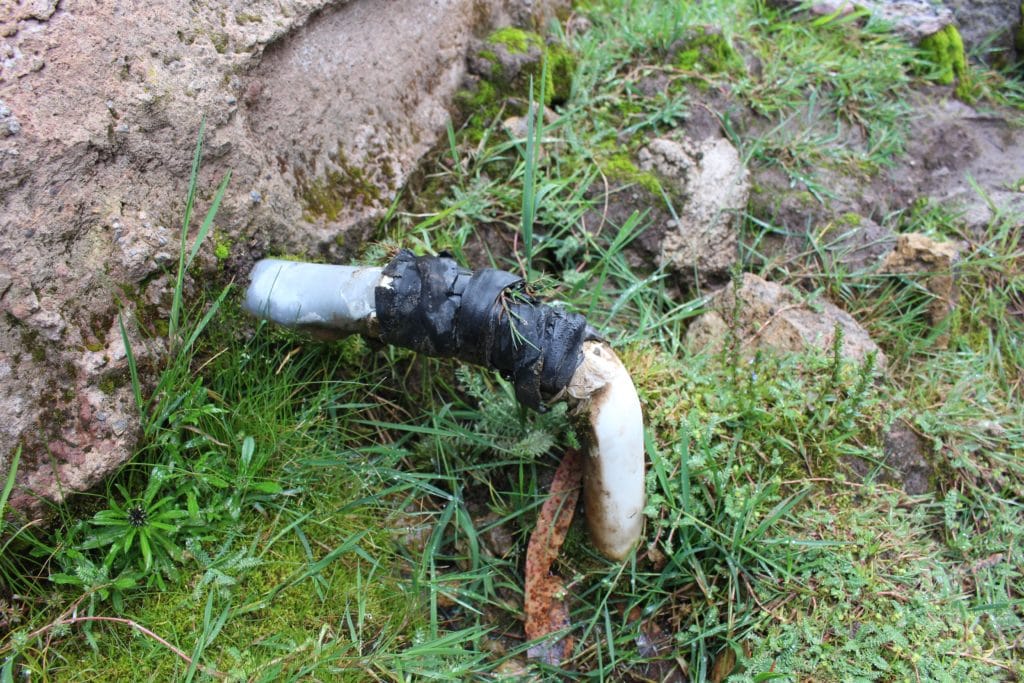
Due to the obvious evidence of parasites that are consistently causing anemia in children, we recommend looking into installing filters at the end of the pipe right before it is distributed to individual houses. This is cost effective because the process of reverse osmosis will occur after transportation, and water will be clean when distributed to houses and buildings in the area. Please see pictures attached for proof of damage and immediate attention. Also shown below is the dimensions of each tank and distances between the tanks, to show how much larger these tanks need to be for proper storage and access to water.
Tank Size: 62 cm. x 62 cm. x 100 cm.
Distances:
Tank 1 to Tank 2: 22 meters
Tank 2 to Tank 3: 4 meters
Tank 3 to Tank 4: 13.5 meters
Tank 4 to Tank 5: 3.8 meters
Tank 5 to Tank 6: 8.59 meters
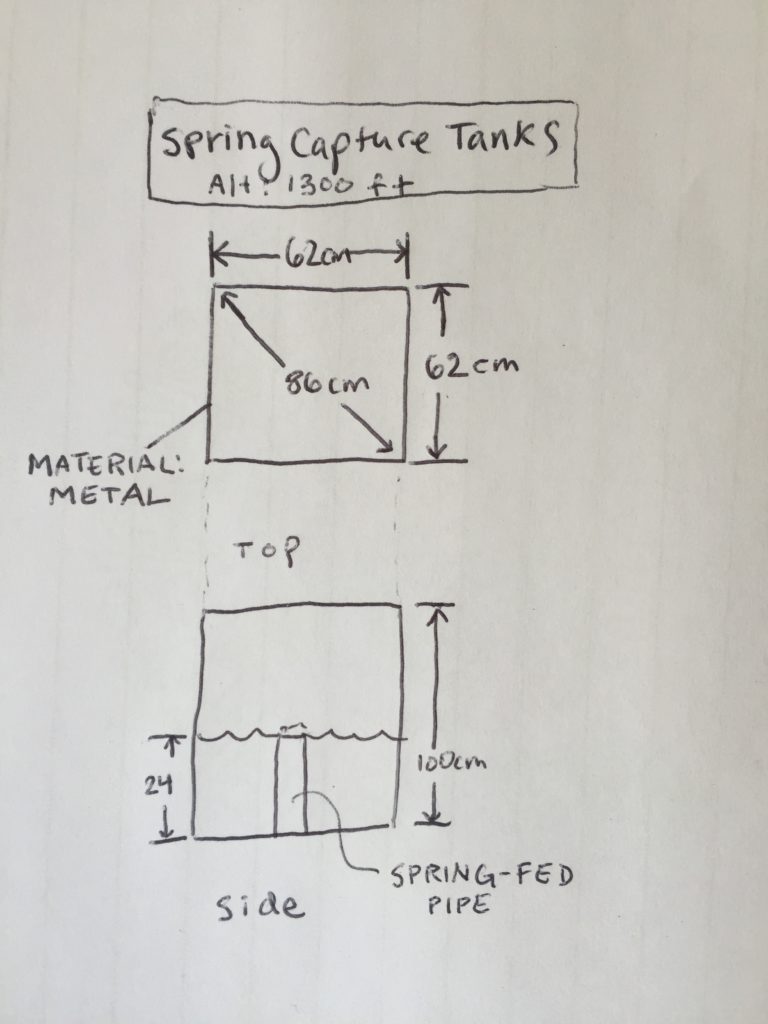
COMMUNITY: HUAYLLARCOCHA
LOCATION: Shapi Basin
TOTAL POPULATION: Approx 1200
MAIN ECONOMIC ACTIVITIES:
- Cultivation of potatoes, corn, beans, and barley
- Breeding of animals (guinea pig, hseep, cattle, alpacas)
- Trade in handicrafts, textiles and other (almost 30% of the population working in this trade)
HEALTH PROBLEMS:
- Malnutrition
- Parasites (of 43 samples analyzed 22 have the guardian parasites lambia, heminolepis nana or others)
- Anemia (45 samples analyzed, 13 have mild to moderate anemia)
- Unsafe water consumption
Our Findings
By Leah Ann VanLandingham, Sara Holt, Amanda Hansen
Overall observations and recommendations
OBSERVATIONS
- Water contains parasites affecting the health of locals
- Current treatment systems only provide 2 days of clean water per month
- The water cistern (‘reservoir’) may hold more water than the community is aware of.
- The community uses 2kg of chlorine at the beginning of each month for cistern sanitation and they say the cistern contains 500 liters of water
- The policies of the ministry of culture and ministry of health are conflicting and inhibiting growth
- Pressure adjusting sites for the cistern and the cistern site itself are
THOUGHTS
- Less chlorine may be required for proper sanitation
- Calculations need to be performed to determine the proper amount of chlorine
- The community could: create a rainwater collection system to offset days without clean water, create a system to measure the water cistern level
- Wooden stoves could be transitioned to gas stoves
- Water samples need to be taken to determine parasites at each specific location
- Individual chlorine packets could be distributed to homes for extra water safety. Research into the safe waiting time for the chlorine to leave the water would need to be performed
- Water could boiled longer to eliminate parasites depending of the type of parasite found in the water sample
- The volume of water in the cistern needs to be calculated to determine the correct amount of chlorine to be added. It may be more than 500 liters
- Chlorine should be added throughout the month instead of only at the beginning of the month, depending on the calculation for the proper amount of chlorine
- Children should not play or bathe in the pressure adjusting sites
- Cistern valves need to be maintained for cleanliness Water Cistern (‘Reservoir’) Cistern Valves Pressure Adjusting Site
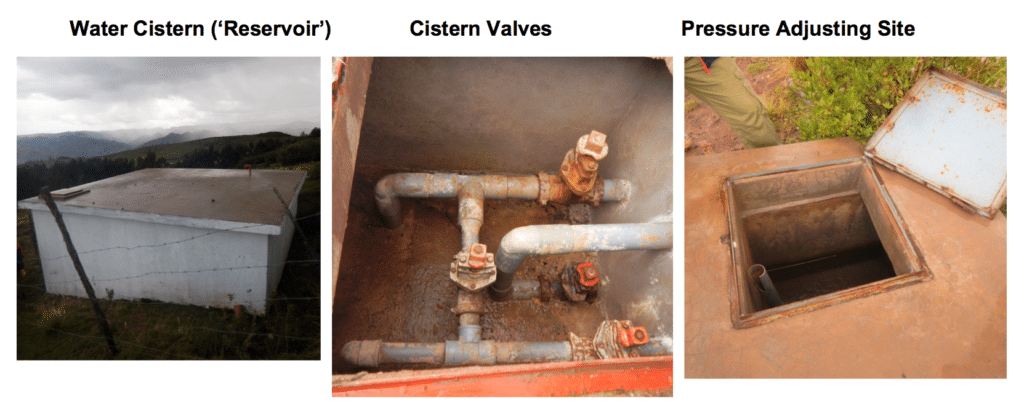
For the next steps, our team will be working with our university partners at USIL and the Municipality to propose a strategy and budget based on our students suggestions and feedback. We hope future GREEN Program cohorts can continue working on this project with repeated visits, building trust and relationships with the communities, and working together towards sustainable solutions for increased water sanitation.
